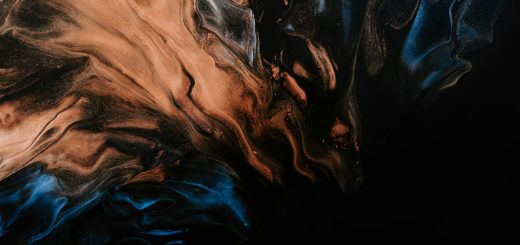The Role of Anubis in Ancient Egyptian Afterlife

Hey there, amazing readers! 🖐️ Just a quick note: yes, we know there are a lot of ads here. Trust us, we get it—it’s not the prettiest look, but they help us keep this blog alive and kicking. Those pesky little ads cover the costs of all the behind-the-scenes magic, from hosting and tech stuff to creating content we hope you’ll love.
We’re committed to delivering quality posts, and your support (even just sticking around despite the ads) means everything to us. So, bear with us, and thanks for helping us keep the good vibes rolling. Now, on to the fun stuff! 😉
TRANSLATE BUTTON AT THE END OF THE ARTICLE
A Quick Overview
The enigmatic figure of Anubis stands as a cornerstone in the fascinating tapestry of ancient Egyptian beliefs about the afterlife.
With a jackal’s head and a guardian’s role, Anubis captures our imagination and beckons us to explore the intricacies of life, death, and what lies beyond.
This article delves into Anubis’s multifaceted role, shedding light on how he guided souls and shaped the understanding of the afterlife in ancient Egypt.
So, grab your ancient scrolls, and let’s embark on this captivating journey together!
Who is Anubis? The Guardian of the Afterlife Explained
Anubis is one of the most recognizable deities of ancient Egypt.
Often depicted as a jackal or a man with a jackal’s head, he embodies the mystery of death and the afterlife.
As the son of Osiris and Nephthys, Anubis has deep roots in Egyptian mythology.
His primary role is to oversee the dead and ensure that their transition to the afterlife is smooth.
What makes Anubis stand out?
Well, unlike other gods who were often associated with life and creation, Anubis is the master of the underworld.
He embodies the complex relationship ancient Egyptians had with death.
They didn’t view death as an end but rather as a transition to another state of being.
Anubis becomes the bridge during this transition, guiding souls from the earthly realm to the afterlife.
Think of Anubis as the ultimate bouncer of the afterlife club.
He checks if you’re on the list and helps you through the doors.
This role is significant; it emphasizes the importance of being properly prepared for what comes after death.
Anubis: The Jackal-Headed Deity of Egyptian Mythology
The image of Anubis with a jackal’s head is steeped in symbolism.
Why a jackal?
Well, in ancient Egypt, jackals were often seen around cemeteries, scavenging the remains.
This association paints Anubis as a guardian of the dead rather than a mere harbinger of doom.
It’s a clever play on nature, where even scavengers can become protectors.
His appearance does more than just signify his role.
The color of Anubis is also of note.
He is often shown in black, symbolizing the fertility of the Nile and rebirth, linking him to themes of life after death.
This connection speaks volumes about how ancient Egyptians viewed death—a necessary step towards rebirth.
Anubis’s attire often includes a long ceremonial robe and an ankh, symbolizing life.
The juxtaposition of life and death in his imagery conveys the message that death is not something to fear but a transition that leads to life in another form.
The Significance of Anubis in Ancient Egyptian Beliefs
To understand Anubis’s significance, we must dive into the core beliefs of ancient Egyptians.
They had a profound respect for the afterlife.
Eternity was a key concept, and how one lived their earthly life determined their fate beyond the grave.
Anubis served as a reminder of this belief, emphasizing the importance of living righteously.
Funerary practices were elaborate and aimed at securing a safe passage to the afterlife.
Anubis was integral to this process.
He represented the assurance that loved ones would be cared for even after death.
By invoking Anubis, families sought his protection and guidance, believing he would watch over their deceased.
Interestingly, ancient Egyptians saw Anubis as a dual figure.
Not only was he a guardian, but he was also a judge.
This duality made him indispensable to their understanding of mortality.
He wasn’t just a passive observer; he actively participated in the journey of the dead.
In essence, Anubis embodied the hope of resurrection.
This hope was crucial in a society that valued life and continuity.
He became a comforting presence, ensuring that the dead would find peace and rebirth.
From Death to Afterlife: Anubis’s Key Responsibilities
Anubis’s responsibilities were diverse, ranging from overseeing burial rites to guiding souls in the afterlife.
His role began as soon as a person passed away.
He ensured that the body was properly mummified and prepared for burial.
This meticulous process was essential for the soul’s journey, as Egyptians believed that a well-preserved body would house the soul in the afterlife.
After death, Anubis continued his work as a guide.
He led the deceased through the perilous journey of the Duat, the Egyptian underworld.
Here, they faced various challenges and obstacles, often depicted as terrifying creatures.
Anubis’s presence provided comfort, as he served as a protector against these threats.
One of his most crucial tasks was the Weighing of the Heart ceremony.
This process determined whether the deceased would enjoy an eternal afterlife or face annihilation.
Anubis weighed the heart against the feather of Ma’at, the goddess of truth.
A heart lighter than the feather meant a good life and a place in the afterlife.
In summary, Anubis’s responsibilities were vital.
He ensured the deceased were treated with respect, guided through dangers, and judged fairly—a testament to his importance in ancient Egyptian belief systems.
The Mummification Process: Anubis’s Essential Role
Mummification was an intricate process that showcased the ancient Egyptians’ dedication to the afterlife.
Anubis played a central role in this ritual.
He was not just a god of the afterlife but also a deity closely associated with funerary practices.
During mummification, priests invoked Anubis to oversee the careful embalming of the body.
They believed that his presence would protect the deceased and ensure that the mummification process was successful.
This connection between Anubis and mummification underscores the importance of preserving the body for the afterlife.
As part of the process, the organs were removed and preserved in canopic jars, each protected by one of Anubis’s children, the Four Sons of Horus.
This further highlights Anubis’s role as a protector of the deceased’s journey.
The final act of mummification involved wrapping the body in linen.
Anubis was often depicted in art during this process, reassuring the living relatives that their loved ones would be cared for.
The respect shown during mummification reflected the deep-seated belief in life after death, showcasing how essential Anubis was in this crucial ritual.
The Weighing of the Heart: Anubis as a Guide
The Weighing of the Heart ceremony stands as one of the most dramatic moments in ancient Egyptian afterlife beliefs.
After navigating through the Duat, the deceased would face Anubis, who would weigh their heart against the feather of Ma’at.
This feather symbolized truth and justice.
Anubis, with his keen eye, would assess the weight of the heart.
A heavy heart, laden with sins, meant that the soul would be devoured by Ammit, a fearsome creature.
Conversely, a balanced heart indicated a life well-lived, allowing the soul to pass into the afterlife.
This process reflects the moral framework of ancient Egyptian society.
They believed that how one lived directly impacted their afterlife experience.
Anubis served as a guide, ensuring that souls faced this judgment fairly.
As he oversaw the ceremony, Anubis’s role extended beyond just a judge.
He was also a comforting presence.
The idea of facing judgment can be terrifying, but with Anubis by their side, souls felt reassured.
His guidance symbolized the hope that everyone deserved a chance at redemption.
Anubis and the Journey Through the Duat Explained
The Duat, or the Egyptian underworld, was filled with challenges and dangers.
Anubis played a pivotal role in ensuring that the deceased navigated this treacherous landscape.
He guided them past various obstacles, including fierce monsters and the trials set before them.
Imagine embarking on a dark adventure, navigating a maze of threats.
With Anubis as your guide, you’d feel a little more secure.
His protective nature reassured the deceased that they would not face these challenges alone.
Furthermore, the journey through the Duat was a test of one’s worthiness.
Anubis helped souls confront the trials that awaited them.
Each challenge served to evaluate the deceased’s life choices and moral standing.
Anubis, as a careful observer, ensured that the process remained fair and just.
The journey through the Duat was not just a passage; it was a rite of transformation.
Anubis facilitated this metamorphosis, allowing the deceased to shed their earthly ties and embrace their new existence.
In this sense, Anubis was a guide for rebirth, a vital player in the cycle of life and death.
Symbols of Anubis: Understanding His Iconography
Anubis’s imagery is rich and varied, each symbol adding layers to his identity.
His most recognizable feature is, of course, his jackal head.
This instantly communicates his role as the protector of the dead.
The jackal’s connection to burial grounds cements his authority in the afterlife.
In addition to the jackal, Anubis is often depicted holding a sistrum, a musical instrument associated with rites and ceremonies.
This instrument symbolizes his connection to the divine and the sacred, emphasizing his importance in Egyptian rituals surrounding death.
The ankh, another common symbol, represents life.
When shown with Anubis, it reinforces the idea that death is merely a transition to another form of existence.
This duality encapsulates the essence of ancient Egyptian beliefs about life and death.
Colors also play a significant role.
As mentioned earlier, Anubis is frequently depicted in black—signifying fertility and rebirth.
This choice of color reflects profound beliefs about the cyclical nature of life.
In summary, Anubis’s iconography serves as a powerful reminder of his role.
Each symbol enriches our understanding of this multifaceted deity and the complex beliefs surrounding him.
Temples and Shrines: Worshipping Anubis in Ancient Times
Temples dedicated to Anubis were scattered throughout ancient Egypt.
These sacred spaces served as places of worship, where people sought his protection and guidance for their deceased loved ones.
In many cases, priests would perform rituals to honor Anubis, invoking his name before the mummification and burial of the dead.
The most famous temple dedicated to Anubis was located at the necropolis of Saqqara.
This site held tremendous significance as it was one of the earliest burial grounds.
Here, rituals took place to ensure that the dead received Anubis’s blessings in their journey to the afterlife.
Shrines to Anubis were also common in households.
They often contained small statues or amulets depicting him, allowing families to pay homage to their guardian deity.
These personal shrines served as a comforting reminder that Anubis was always watching over their departed loved ones.
People believed that inviting Anubis into their homes and lives would bring them peace, especially during mourning periods.
The rituals performed at these shrines were deeply personal, as they connected the living with the dead.
In essence, the physical spaces dedicated to Anubis reflected the immense respect and reverence ancient Egyptians held for him.
They embodied the belief that with Anubis’s guidance, the dead could find their way safely to the afterlife.
Anubis in Art: Depictions in Ancient Egyptian Culture
Artistic depictions of Anubis offer fascinating insights into his role and significance.
From carvings on tomb walls to intricate paintings, Anubis appears prominently throughout Egyptian art.
His image often appears in scenes depicting funerary rituals, guiding the deceased, or overseeing the Weighing of the Heart.
One striking feature is the consistency of his portrayal.
Whether in reliefs, sculptures, or paintings, Anubis maintains his jackal-headed appearance.
This uniformity reinforces the idea that he was a constant presence in the afterlife journey, a reliable guardian.
Another interesting aspect is how artists sometimes depicted Anubis in various sizes.
In scenes where he stands next to Osiris, he might appear smaller, symbolizing his role as an assistant or subordinate.
However, in other contexts, he might take center stage, emphasizing his importance in guiding souls.
The rich colors used in Anubis’s depictions also deserve mention.
Artists used black, gold, and green—colors symbolizing fertility, the afterlife, and rebirth.
This choice of colors enhances the visual representation of Anubis and the themes associated with him.
Additionally, amulets featuring Anubis were popular among the living.
These amulets acted as protective charms, believed to safeguard both the wearer and their loved ones in the afterlife.
In summary, art played a crucial role in shaping and communicating the image of Anubis.
Through various mediums, the ancient Egyptians captured his significance, ensuring that his legacy persisted through generations.
Myths and Legends: Anubis in Egyptian Storytelling
Anubis’s character also features prominently in ancient myths and legends.
His narratives often explore themes of death, resurrection, and the moral choices of individuals.
One popular myth involves Osiris, the god of the afterlife, and his resurrection after being murdered by Set.
Anubis played an instrumental role in the resurrection of Osiris, showcasing his importance in the Egyptian pantheon.
In one version of the myth, after Osiris’s body was dismembered, Anubis assisted Isis, Osiris’s wife, in reassembling and embalming him.
This act symbolizes the restoration of life and the cyclical nature of existence, a central theme in Egyptian beliefs.
Another tale features Anubis confronting the spirits of the dead.
He would ensure they were judged fairly, reflecting the ancient Egyptians’ belief in justice and morality.
These stories not only entertain but also serve as moral lessons for the living, emphasizing the importance of leading a virtuous life.
Through these myths, Anubis emerges not just as a guardian but also as a figure of compassion.
His interactions with other deities and mortals portray him as a character with depth and empathy—an essential aspect of ancient Egyptian storytelling.
The Legacy of Anubis: Influence on Modern Culture
Anubis’s legacy extends far beyond ancient Egypt.
Today, he continues to fascinate people across cultures.
His iconic image and role as the guardian of the afterlife have inspired numerous adaptations in literature, film, and art.
Think about movies like "The Mummy" or even video games that delve into Egyptian mythology.
Anubis frequently appears as a mysterious figure, embodying the allure of ancient cultures.
His character resonates with themes of death and the afterlife, provoking curiosity and interest.
Furthermore, his symbolism is often associated with protection and guidance.
Many modern interpretations view Anubis as a metaphor for navigating life’s challenges, just as he guided souls through the Duat.
This connection to personal growth and transformation keeps his legacy alive in contemporary discussions.
In art and fashion, Anubis’s imagery appears in tattoos, jewelry, and clothing.
His striking figure continues to captivate, serving as a reminder of ancient wisdom and the timeless exploration of life and death.
In conclusion, Anubis remains a powerful symbol rooted in ancient history.
His influence pervades our modern culture, breathing life into age-old themes and stories.
Conclusion
Anubis’s role in the ancient Egyptian afterlife is a rich tapestry of guidance, protection, and moral judgment.
He embodies the complexities of life, death, and rebirth, shedding light on how ancient Egyptians perceived their existence.
From overseeing mummification to guiding souls through the Duat, Anubis played a pivotal role in ensuring the deceased found peace in the afterlife.
His legacy transcends time, influencing modern culture and art.
We find ourselves drawn to his story, reflecting on themes that resonate through ages.
Anubis’s enduring presence reminds us that while our lives may be fleeting, the journey beyond is one of hope, transformation, and continuity.
Just like the ancient Egyptians, we too seek comfort in knowing that there is someone watching over us as we navigate life’s mysterious journey.

The Enlightenment Journey is a remarkable collection of writings authored by a distinguished group of experts in the fields of spirituality, new age, and esoteric knowledge.
This anthology features a diverse assembly of well-experienced authors who bring their profound insights and credible perspectives to the forefront.
Each contributor possesses a wealth of knowledge and wisdom, making them authorities in their respective domains.
Together, they offer readers a transformative journey into the realms of spiritual growth, self-discovery, and esoteric enlightenment.
The Enlightenment Journey is a testament to the collective expertise of these luminaries, providing readers with a rich tapestry of ideas and information to illuminate their spiritual path.
Our Diverse Expertise 🌟
While our primary focus is on spirituality and esotericism, we are equally passionate about exploring a wide range of other topics and niches 🌍📚. Our experienced team is dedicated to delivering high-quality, informative content across various subjects ✨.
To ensure we provide the most accurate and valuable insights, we collaborate with trusted experts in their respective domains 🧑🏫👩🏫. This allows us to offer well-rounded perspectives and knowledge to our readers.
Our blog originally focused on spirituality and metaphysics, but we’ve since expanded to cover a wide range of niches. Don’t worry—we continue to publish a lot of articles on spirituality! Frequently visit our blog to explore our diverse content and stay tuned for more insightful reads.







